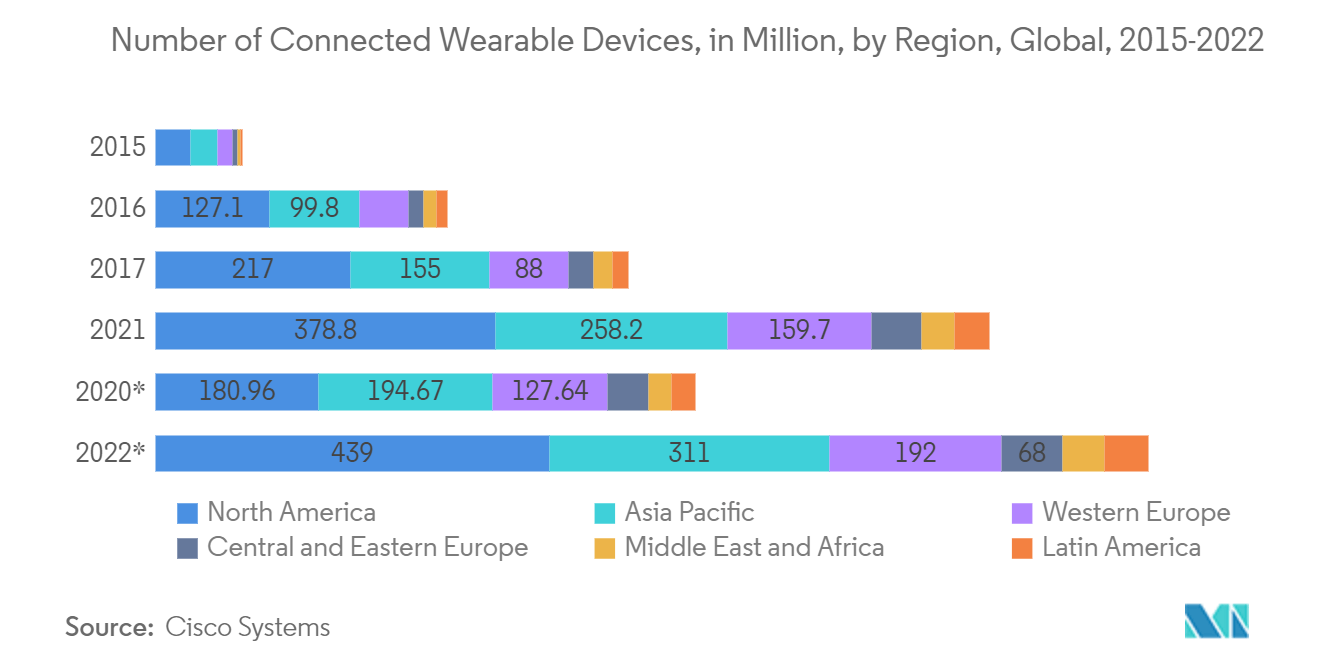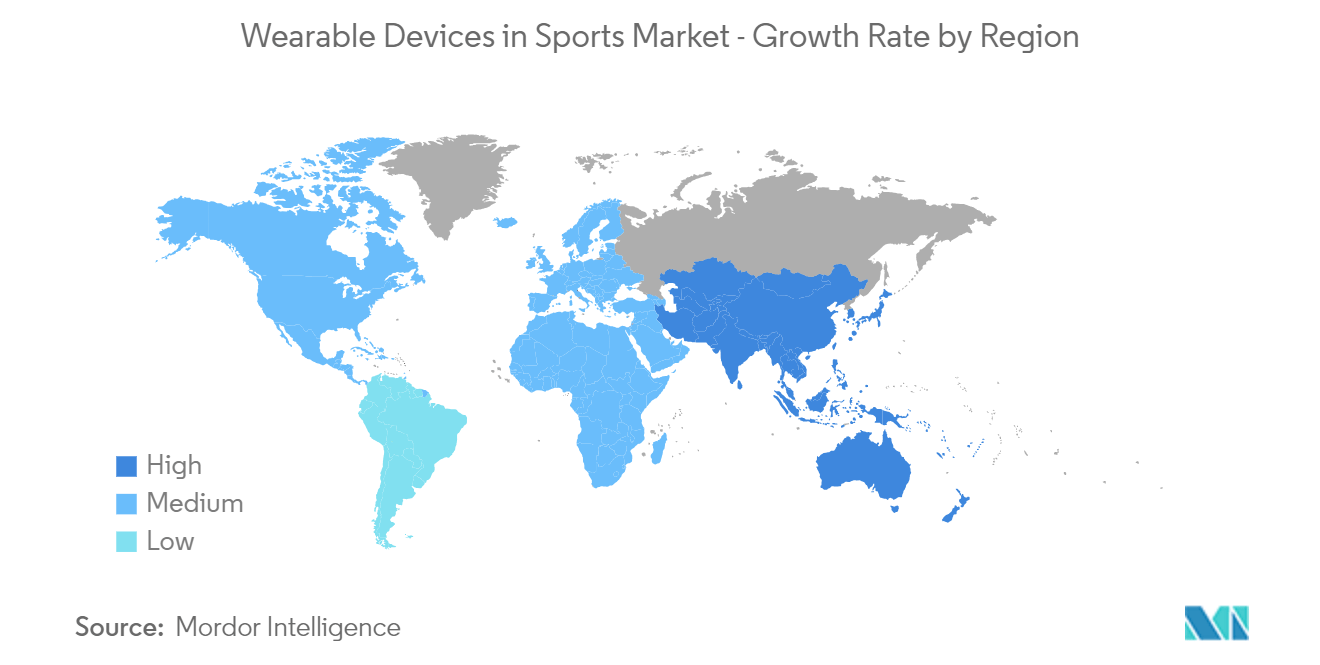Market Trends of Wearable Devices in Sports Industry
Smart Clothing Device Type Segment is Expected to Hold Significant Market Share
- Smart fabrics, also known as smart clothing, smart garments, electronic textiles, smart textiles, or E-textiles, can be defined as fabrics that can sense and react to the external environment via a pre-defined control mechanism or cognitive-driven behavior. These arrangements help monitor the user's physical condition by using advanced technologies. At present smart clothing, the market is at its nascent stage and is expected to rise at a notable speed during the forecast period, owing to growing fitness.
- Smart clothing, such as smart vests, undergarments, smart shoes, smart socks, and smart tights, will have various potential applications, such as communicating with other devices, harvesting energy transformed into other materials, and protecting wearers from environmental hazards.
- Various institutes have also been investing in research activities to increase applications for smart clothing. For instance, MIT has created a lightweight sensor that can be embedded into flexible fabrics, including polyesters typically used in athletic wear, to constantly monitor vital signs, including body temperature, heart rate, and respiratory rate. The sensors are machine-washable and can be integrated into clothing that can be removed and reused in different garments. The sensor has potential applications across the health industry, in athletics, and in astronaut vital sign monitoring. National Aeronautics and Space Administration (NASA) and Massachusetts Institute of Technology (MIT) Media Lab Space Exploration Initiative partly funded MIT research.
- By integrating smart wearables into clothing, smart clothes or Internet of Things (IoT)-based garments may be developed. According to Cisco Systems, wearables utilized in North America and Asia Pacific are accounted for around 70% of global wearable 5G connectivity in 2022. The architecture of smart fabrics consists of the typical elements of a cyber-physical system, sensors, processing units, connect advice, conduits, and actuator elements complemented by an energy supply for its functionality.
- Further, with smart clothing, the more significant function is the passive function, where sensors monitor an athlete's physiological measurements or physical movements. It can make smart evaluations based on the data and deliver real-time feedback suggesting that athletes work harder, rest, correct their technique, etc.

North America is Expected to Hold Significant Market Share
- The wearable devices market in North America, specifically the sports industry, has grown significantly in recent years. Wearable devices are electronic devices worn on the body, typically in accessories or clothing, and are designed to collect and analyze data related to sports and fitness activities. These devices are equipped with various sensors and technologies that track and monitor parameters such as heart rate, steps taken, distance covered, and calories burned, and even provide real-time feedback and coaching.
- The US soccer athletes have been wearing them while playing for many years. Companies like STATSports and Catapult Sports, which are popular in the global positioning system (GPS) tracking space, have greatly benefitted from these trends.
- The increasing demand for wristwear and bodywear products has led to the growth of wearable devices in North America's consumer products sector. Additionally, US-based companies' increasing developments and innovations have contributed most significantly to the region's market and, specifically, in the United States, resulting in a significant increase in the usage of wearable devices.
- The growing awareness and focus on health and fitness among individuals have led to a surge in demand for wearable devices that can help track and improve their physical activities. In addition, companies are also collaborating actively to innovate their products. For instance, Athos, an athletic & smart clothing player, works with the US-based Golden State Warriors to use smart clothing to prevent injury and optimize player performance. The product includes an OMsignal fitness sports bra and an attractive lifestyle bra that can capture real-time ECG, physical, and respiratory activities.
- The smart fabric has become a significant component in creating new military uniforms to improve soldiers' health while giving added battlefield insight. The military has a partnership with several government agencies, industry leaders, and academia to encourage and advance the growth of smart clothing solutions that would be useful to the US military by providing them with a technological and tactical edge over its opponent.
- The wearable devices market in North American sports is poised for growth with the increasing adoption of fitness-tracking technologies and continuous innovation in the industry. As technology continues to advance, we can expect further integration of wearables into the sports ecosystem, empowering individuals to monitor and improve their athletic

